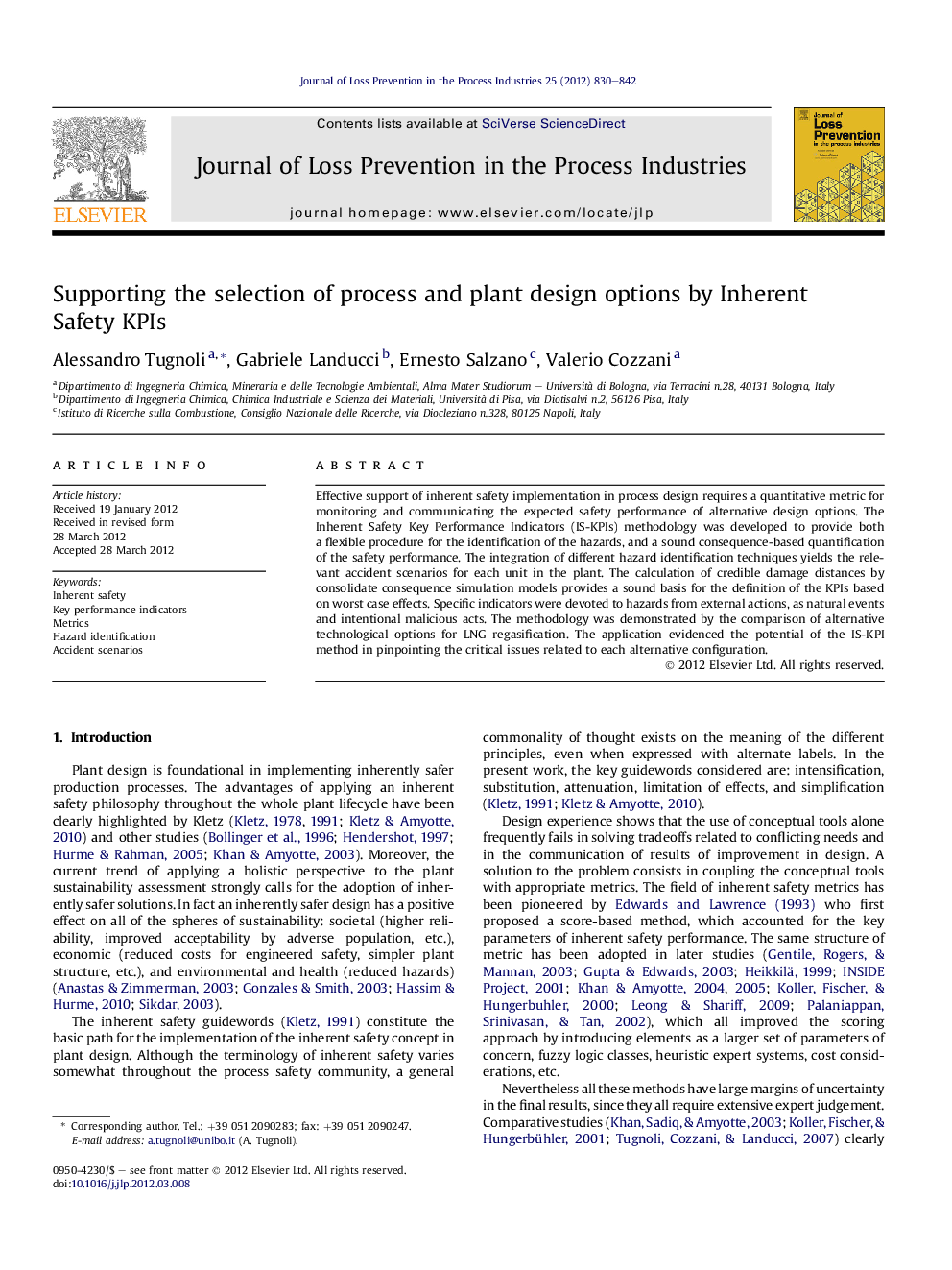| Article ID | Journal | Published Year | Pages | File Type |
|---|---|---|---|---|
| 586490 | Journal of Loss Prevention in the Process Industries | 2012 | 13 Pages |
Effective support of inherent safety implementation in process design requires a quantitative metric for monitoring and communicating the expected safety performance of alternative design options. The Inherent Safety Key Performance Indicators (IS-KPIs) methodology was developed to provide both a flexible procedure for the identification of the hazards, and a sound consequence-based quantification of the safety performance. The integration of different hazard identification techniques yields the relevant accident scenarios for each unit in the plant. The calculation of credible damage distances by consolidate consequence simulation models provides a sound basis for the definition of the KPIs based on worst case effects. Specific indicators were devoted to hazards from external actions, as natural events and intentional malicious acts. The methodology was demonstrated by the comparison of alternative technological options for LNG regasification. The application evidenced the potential of the IS-KPI method in pinpointing the critical issues related to each alternative configuration.
► The Inherent Safety Key Performance Indicators (IS-KPIs) methodology was developed. ► The IS-KPIs provide a flexible tool for a consequence-based quantification of the safety performance. ► The methodology contains specific indicators devoted to hazards from external threats (e.g. natural events, malicious acts). ► A case study on alternative technologies for Liquefied Natural Gas (LNG) regasification is provided. ► The IS-KPIs captured the increase of safety performance for design changes in conformity with the inherent safety guidewords.
